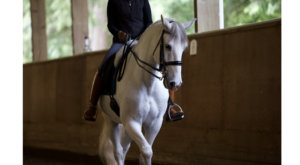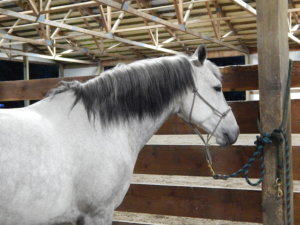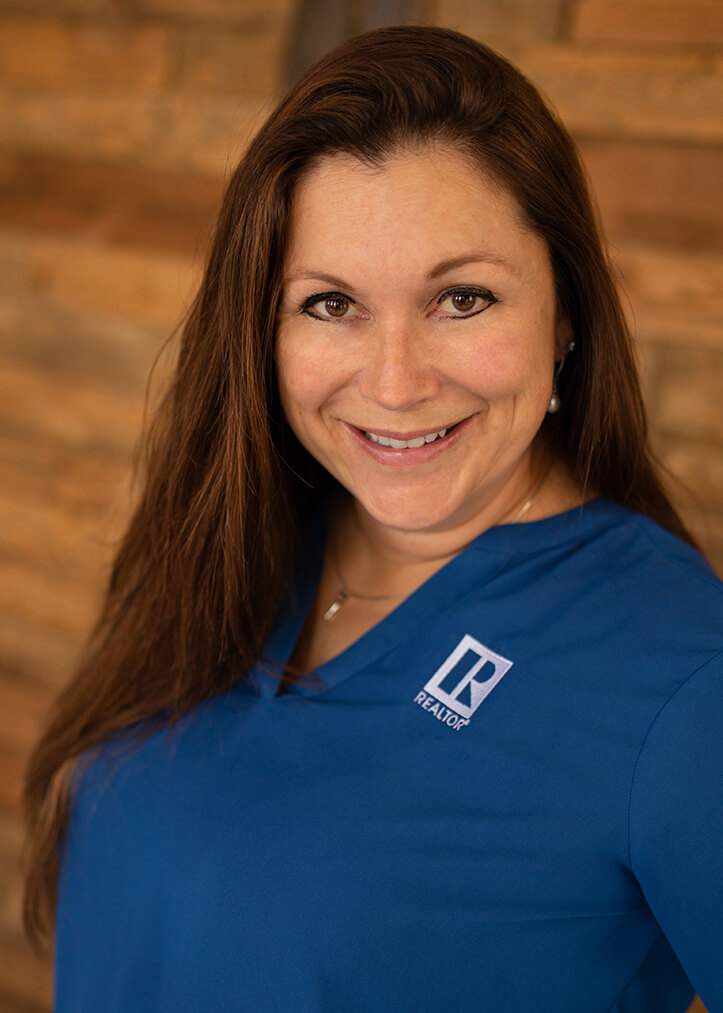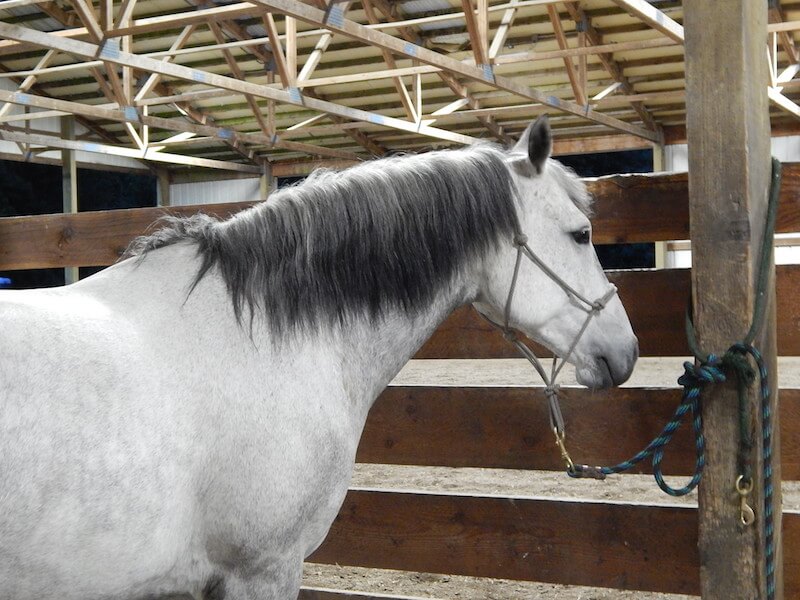What Does it Mean When Trainers Say a Horse is Broke?
By Allison Trimble
Hi Allison!
Amateurs like me don’t really know what trainers mean when they talk about a broke horse. Would you explain what the term means and some tips for getting our horses there? Thanks, Dick
Philosophy
A broke horse is not a designation that is reached, but a spot on the horizon we’re always working towards. The journey begins at the first interaction between horse and human and continues through training under saddle. We say that it requires a human 10,000 hours to become an expert at something, and I would say that is probably accurate for horses as well. The difference is that in this journey, the outcome of the training of the horse lies squarely on the shoulders of the human to be consistent, thoughtful, skilled and kind.

Trust is the single most important component of the relationship between a horse and trainer, and the broke horse is a horse that fully trusts humans. In the creation of the broke horse, always remember it’s not the job of the horse to trust, but it’s the responsibility of the trainer to be trustworthy.
In my definition, a broke horse willingly completes any task asked of him — quietly, and at the speed he is asked. He allows the rider to handle him in any situation, even if it goes against his flight or fight nature. It’s important that horses are well trained for the safety of the rider and for the safety of the horse. Our job as a steward of the horse is to ensure that he is safe and cared for.
A broke horse, no matter the circumstance of the owner, will always find a home. I can rest easy knowing that if something were to happen to me, my horses would have no trouble finding someone eager to care for them.
Ground Manners
A well-trained horse ties quietly, leads respectfully, and loads into the trailer easily. Clipping, bathing, worming, shoeing and vaccinating should all happen without drama. This training starts from the first moment the horse is met and continues throughout his life. The horse must be handled often and properly, taking time to correct poor behavior, and teach good habits.
Early on I teach my horses to send on the lead rope. I want to be able to direct them away from me with as much control as if they are next to me. This comes in handy when bringing a horse in and out of a stall and loading in the trailer.
I want my horses to lead in tune with my body position, traveling slightly behind me and to my right, at the speed I set, slowing, stopping and turning while maintaining a safety bubble. Take the time to be thoughtful about the relationship on the ground, rather than rushing to the hitching post or to turn out each day.

Horses should spend significant time tied. As youngsters this starts with being tied to the arena wall while other horses are being worked. Patience is a key quality in a broke horse, and it starts here. Some horses need more time tied than others, but as a rule, they stay tied until they are able to stand quietly. Know how to safely tie. Human error is the cause of most tying issues, and it can be tough to correct once there is a problem.
I know that every time I am in my horse’s bubble, I am impacting his training. Connection on the ground is key for success in the saddle, even in horses who are advanced in their training.
Sensitized, Not Desensitized
I think there’s a key difference, particularly in the mindset of the trainer. Broke horses are not desensitized to the world; they are properly sensitized to their trainer. We don’t want them numb; we want them to accept our handling and cues.
This starts with something as simple as sacking a horse out with a flag or a saddle pad from the ground. In this moment we are not teaching the horse to accept any contact with any object, just the one we are asking them to accept. The same is true under saddle.
We expose our horses to as many new environments and scenarios as possible. Not in an attempt to desensitize them to all possible situations, but to teach them that if we ask it of them, the outcome will be safe. We do this in preparation for the situation we cannot predict, when the broke horse will trust us to direct him responsibly.
Trainability
As a trainer, I focus on creating a willing and trainable partner. A horse who enjoys his job will always perform best. Sometimes this requires setting aside a plan I had for the day to focus on what the horse is showing me he needs. One of the most important characteristics of a broke horse is that he comes to the hitching post ready to go to work every single day.
I know this sounds a lot like colt-starting advice, but the goal of a properly started horse is that he is molded into a willing, trained partner. The only way to build a broke horse is to implement a philosophy and program as a trainer that allows him to elevate to that status.
I am always asked for drills or things to do while training a horse. While those tools are helpful, it’s vastly more important to understand the intention and the desired outcome. An improperly used tool is as useless as no tool, and sometimes worse than if it hadn’t been used at all.
Just like the horse, it’s important that we trainers are willing and trainable and that our heads are in the right space as we swing a leg over and start the process of creating a broke horse under saddle.

Allison Trimble is a Realtor® specializing in equestrian properties, farm and ranch properties, and residential real estate. She’s a former horse trainer, and a current owner, breeder, and non-pro competitor in cow horse and reining events. For many years, Allison wrote a monthly column for The Northwest Horse Source.
Learn more at www.allisonblakerealestate.com






